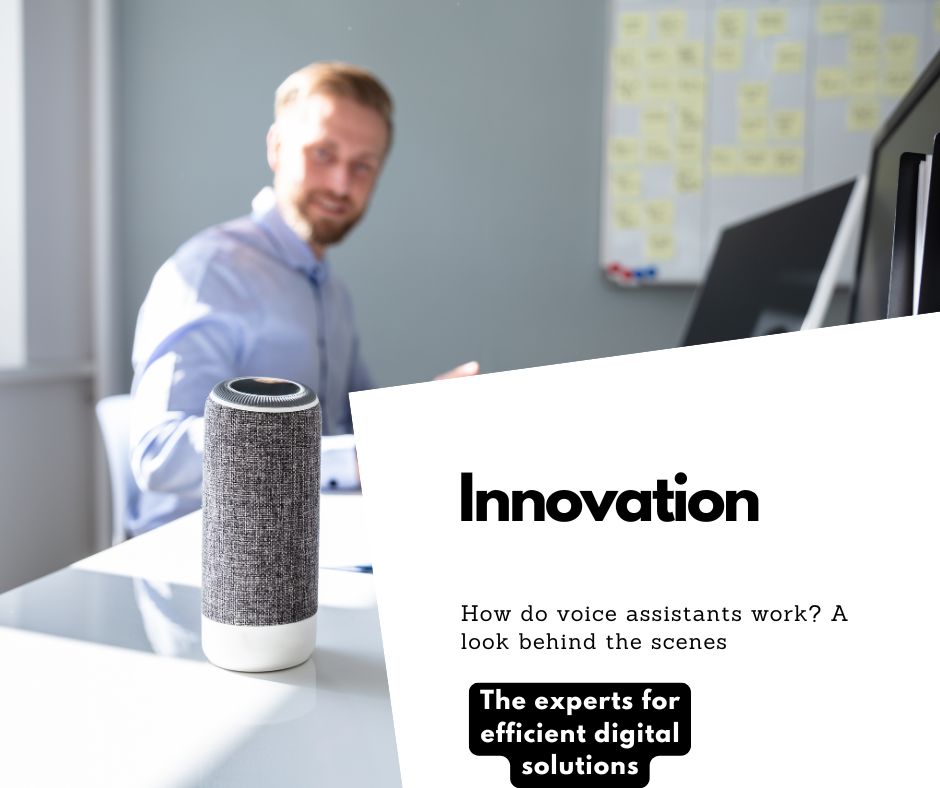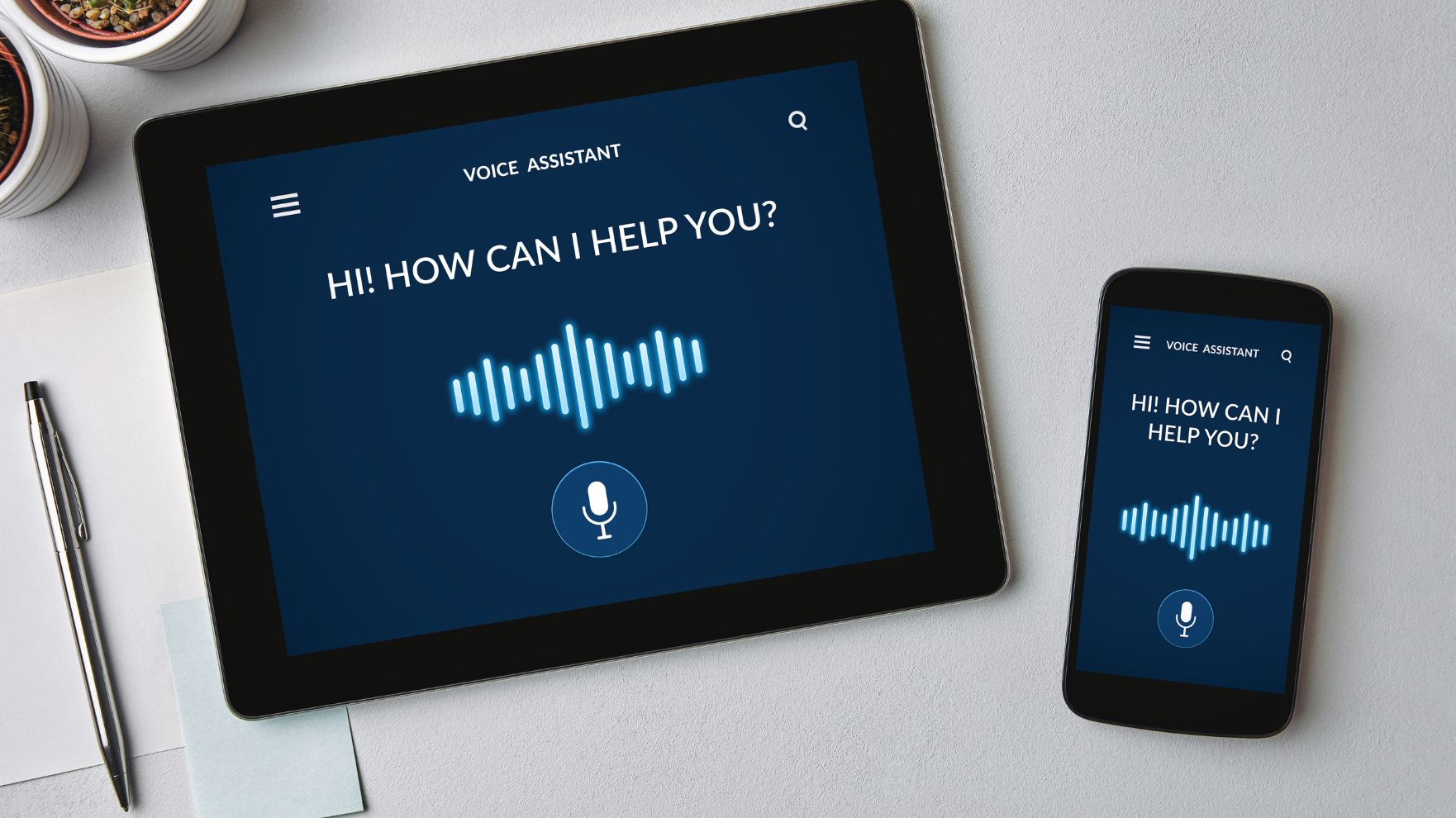How do voice assistants work? A look behind the scenes

In recent years, voice assistants such as Siri, Google Assistant and Alexa have become an integral part of our everyday lives. These digital helpers allow us to interact with our devices without pressing a button. But how exactly do these voice assistants work? In this article, we take an in-depth look at the technologies behind these intelligent systems and explain how they are revolutionizing our interactions with technology.
The basics of voice assistants
Voice assistants are programs that are designed to recognize, understand and respond to spoken language. They use a combination of speech recognition, natural language processing (NLP) and machine learning to perform tasks and provide information.


The speech recognition process
a. Speech recognition
The first step in activating a voice assistant is voice recognition. When you speak to a voice assistant, your speech is converted into a digital format.
b. Natural language processing (NLP)
Speech recognition is followed by natural language processing, which enables the voice assistant to understand the meaning of the recognized text.
Response generation
Once the voice assistant has understood the intention, the next step is to generate a response.
- Database queries: The wizard searches relevant databases or APIs to find the required information.
- Use of large language models (LLMs): Many modern voice assistants use LLMs to formulate the generated response in natural language. These models are trained to generate human-like texts and understand complex questions. LLMs help to create precise and contextually appropriate answers that offer the user a better experience. For example, they could query weather data, news or calendar entries.
- Answer formulation: The assistant formulates an answer based on the information found. This answer can be written in natural language so that it is easy for the user to understand.
- Speech synthesis: The generated answer is then converted into spoken language using text-to-speech technology (TTS) so that the user can hear the answer.


Machine learning and continuous improvement
A decisive factor for the performance of voice assistants is machine learning. By analyzing user data and interactions, voice assistants are constantly learning.
Challenges and the future
Despite advances in technology, voice assistants still face challenges:


Case study 1: Automotive manufacturer for customer service and vehicle information
Company:
A leading international automobile manufacturer
Background
The car manufacturer wanted to improve customer service and offer users an easy way to access information about their vehicles. Customers often had difficulties finding important information such as operating manuals, maintenance instructions or technical specifications.
Solution
Implementation of a voice assistant for mobile and smart home devices
Result
Following the introduction of the voice assistant, the car manufacturer was able to increase customer satisfaction by 35%. Customers appreciated the immediate availability of information and the user-friendly interaction. The company received positive feedback on the user-friendliness and efficiency of the customer service.
Case study 2: Healthcare provider for patient interaction
Company: A large healthcare company with numerous clinics and practices
Background
The company was confronted with a high number of calls and requests for appointments and general information. This led to long waiting times for patients and put a lot of strain on the staff.
Solution
Development of an intelligent voice assistant to support patient interaction
Result
The voice assistant reduced the call load in customer service by 40 % and increased the number of successfully booked appointments by 25 %. Patients reported a better experience as they received immediate responses to their queries and waiting times were significantly reduced. This led to improved patient retention and a more efficient operation.


The integration of voice assistants into our customers’ business processes is more than just a technological innovation – it is a step towards a more efficient and customer-centric future. Through our tailored solutions, we enable companies to provide real value to their customers by simplifying interactions while gaining valuable insights into user behavior. We are proud to actively support our customers’ transformation and help them succeed in an increasingly digital world.
Till Neitzke
Outlook and conclusion: Voice assistants – a look behind the scenes
The future of voice assistants looks promising. With advancing technologies in machine learning and artificial intelligence, voice assistants are expected to become smarter, more user-friendly and contextualized. Integration with different devices and platforms will allow users to interact seamlessly with technology wherever they are.
Voice assistants have revolutionized the way we interact with technology. By combining speech recognition, natural language processing and machine learning, they enable intuitive and efficient communication. While there are still challenges to overcome, the technology is showing promising progress that will lead us into a future where voice assistants are indispensable companions in our everyday lives.

Voice tech explained: The most important questions about voice assistants
Successful together in the digital transformation –
Your introductory meeting with DMG
In our introductory meeting we will discuss
- what your current challenges are in digital projects
- how other companies have done it and how you can use this to your advantage.
- what needs to be done now and whether we are the right people for the job.
